Sowing Pygmy Sundew Gemmae
- Megan
- Nov 8, 2022
- 4 min read
Updated: Jan 2, 2023
A selection of my pygmy sundews from this summer
Besides Drosera regia, pygmy Drosera are my favourite of all the sundews. As their name suggests they are small, sometimes even tiny Drosera, rarely over an inch in diameter. These sundews are often rosette formed or sometimes have a tall structure and come in a range of colours. Covered in dew, which sparkles in the sunlight, these plants are clusters of little gems.
Most pygmy sundews originate from southwestern, Western Australia from which they have hot summers and cooler winters. It's when the temperature starts to drop after summer that these complex group of plants shine the most, putting on prolific growth and colour.
What is unique about these Drosera is that as the weather cools and the days grow shorter, they produce gemmae. Gemmae is a modified bud of tissue which detaches from the parent plant and then grows into a new individual. This form of asexual reproduction is the best and quickest method to propagate these plants, masses of gemmae are created from just one plant, therefore giving you a pot full of new stock each year!
Pygmy sundew gemmae from a selection of my plants!
Each gemmae is pinhead sized or sometimes even smaller. The gemmae will form at the center of the plant, forming crowns of buds almost resembling fish scales, The gemmae is held to the centre of the plant by coiled hairs, in the wild or outside in cultivation, when struck by rain the gemmae will disperse from the mother plant, starting off the next generation.
Pygmy sundews have very fragile root systems; therefore, it is advised that they should not be repotted at any time as this is likely to affect their growth and lead to death. Therefore, gemmae is a perfect way to get a fresh pot of new plants without repotting.
When in contact with media, the gemmae will root and grows rapidly often flowering and creating their own gemmae within the same year!
Some of my flowering pygmy sundews, notice the range of colours and shapes of the flowers, some of which are bigger than the actual plants. Flowers are not open long but to catch them open is a wonderful sight!
So how do you go about growing these wonderful sundews from gemmae?
This is the method I use each year and it is very similar to growing Drosera from seed. It is simple and straight forward so you will be creating pots of beautiful pygmy sundews quickly!

Firstly, if you are sowing gemmae from your own plants, then select a plant which has gemmae ready. You can tell whether the gemmae is ready when it has a crown of lots of gemmae in the centre of the plant or sometimes it has already started to fall from the centre. You can also use a toothpick or moist cotton bud to dab the gemmae and it should stick, thus ready to be sown. Try not to pick gemmae before it is ready otherwise it may not be viable and won't grow.
(Right) Drosera pulchella x nitidula gemmae ready, notice the loose scales of gemmae and how they are starting to come away from the plant.

Start by filling a pot of your chosen media, I like to use a mixture of peat and perlite then add a thin layer of peat over the top to sow the gemmae onto. However, you can also use a peat and sand mix or sphagnum moss. After you have filled your pot, make sure to water thoroughly with rainwater, distilled water or RO water.
I use both 7cm and 9cm square pots depending on how many I want to sow at a time. In this example I am using 7cm
Once the media is fully saturated, grab a damp toothpick or cotton bud and gently dab the gemmae. You should be able to pick up a lot of gemmae in one go!
Gemmae being collected from Drosera X carbarup via cocktail stick
Next, transfer the gemmae to your pot and gently space the gemmae on the surface of the media. Try to space them the best you can to prevent too much overlap when growing.
Gemmae being placed on the surface of peat via cocktail stick
Depending on your conditions gemmae will take anytime from a couple of weeks or even longer to start growing. They can be grown happily on a sunny windowsill, under grow lights or even in an unheated greenhouse. For the strongest colouration within plants, ensure they receive a lot of sunlight. I grow my pygmy sundews outside year-round, I will often sow gemmae under grow light to get a head start, then place back outside in the greenhouse in Spring. A nice sunny spot, that isn't too cold will encourage gemmae to grow, remember not to let them dry out.
Gemmae will start growing by firstly sending out roots before the plant emerges from the bud.
(Left) Drosera scorpioides just starting to emerge from gemmae
(Right) Drosera roseana starting to form carnivorous leaves from gemmae
See below how pygmy sundews progress during the space of a year. Images showing Spring, Summer and Autumn!
(Above) Drosera gibsonii over a year
(Above) Drosera X carbarup over a year
And that's it! Pygmy sundews are stunning and unusual plants which are a must have for any Drosera lover. They can be purchased as gemmae or as plants during the growing season, they are one of the most rewarding Drosera you can grow in my opinion as you get to see how they progress during the year along with the fascination of them catching insects from tiny fruit flies to even greenbottles!
Best species to start with:
Drosera roseana
Drosera scorpioides
Drosera pulchella and its hybrids
(Above) In order: Drosera roseana, Drosera scorpioides and Drosera pulchella, these easy to grow pygmy sundews are perfect for beginners!
Here are a few more pygmy sundews from my collection:











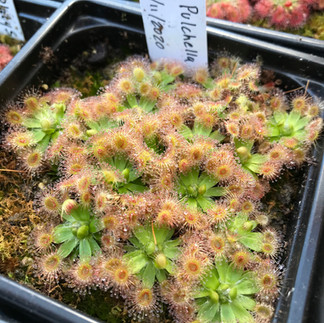



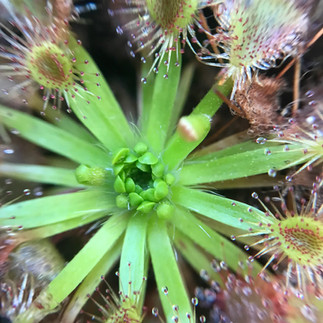

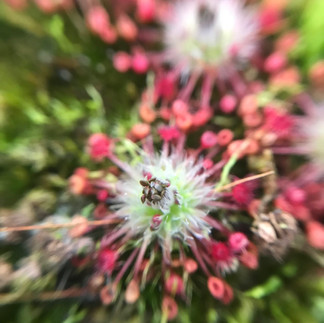

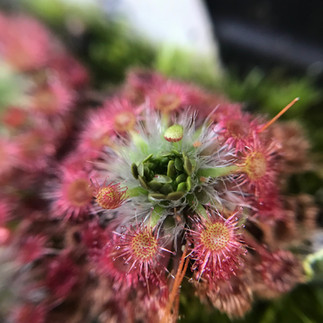




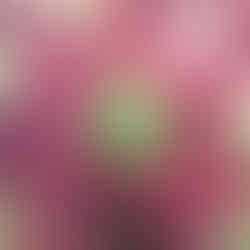
















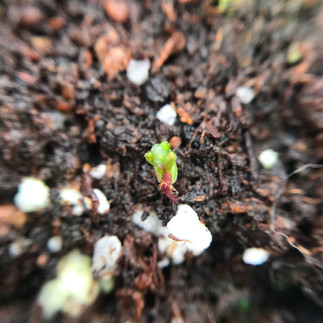



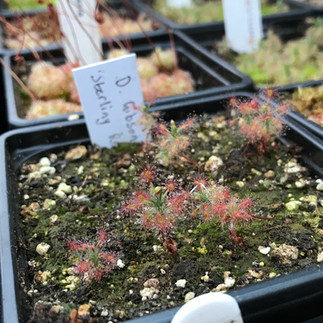








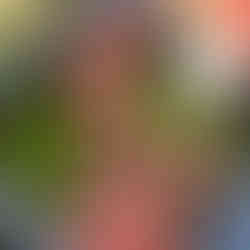


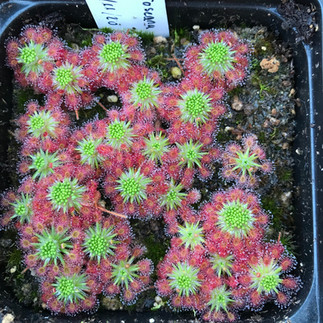













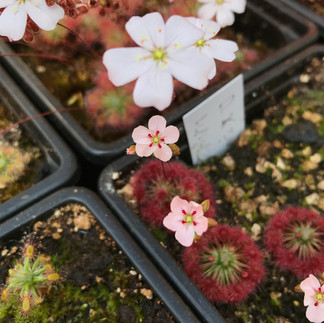


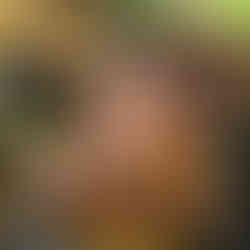





Comments